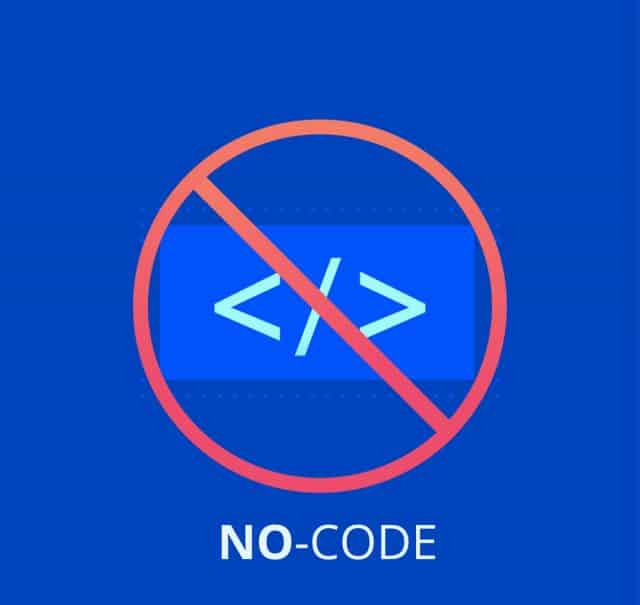How no-code platforms are helping meet enterprise business challenges [Q&A]

According to a November Wall Street Journal article, Gartner predicts global revenue in the low-code application platforms market will exceed $14 billion by 2025. Also, in a Forrester Research poll earlier this year of over 1,800 corporate tech officials at global companies, roughly 37 percent say they currently use low-code, no-code or digital process automation tools.
No-code is undoubtedly having its time in the sun and looks to be here for the long term. We recently caught up with Vinod Kachroo, CEO of no-code technology platform Innoveo, to learn more about what's driving the demand for no-code and what kind of ROI companies can realistically anticipate from it.
BN: How do no-code platforms help with current challenges like the IT skills shortage and minimizing legacy complexity?
VK: No-code technology has been a game changer in the marketplace enabling digital capabilities across industry verticals. In certain industries, like insurance and financial services, there are still a lot of businesses running on legacy technologies and complex architectures that no-code has helped address. Additionally, with the current IT skill shortage and aging workforce, no-code has been able to deliver immense value given how it empowers non-technical IT resources, tech savvy business users and citizen developers with the ability to develop new business capabilities and applications.
We're also seeing companies looking to simplify their business architecture to make for easier deployments along with creating a new level of capabilities and new types of integrations across multiple platforms.
Over last two decades, we shifted into the 'buy before you build' model of IT. No-code is making building applications cool again, letting almost anyone build capabilities quicker with higher levels of configurability, democratizing application development. In fact, with our approach to market, we are allowing businesses to leverage our pre-built solution accelerators to assemble applications. The building blocks are already in place.
BN: Where does no code fit within a company's broader technology strategy?
VK: No-code is a critical component for enabling new technology architecture and leveraging digital. It can leverage existing investments in technology infrastructure and continue to drive ROI from a company's existing IT architecture by enabling ecosystems and embedding, as well as extending, new capabilities in the current business architecture. It makes the transition from old to new an incremental value driven journey. Large scale transformations that take a long time and cost a large portion of budgets are now things of the past, as they mostly have failed to deliver their advertised benefits or value.
BN: Should all application development eventually be done on no code platforms?
VK: Yes and no. For most net-new capabilities and entirely new experiences with simple or medium complexity, it should be built with no-code and can easily be integrated with all existing systems as needed. If you already have made significant investments in your technology stack and infrastructure, it is better to get additional returns on your investment and rather surround and integrate that with no-code as opposed to replacing it all immediately. No-code can be the common experience or common integration layer across the two architectures which overtime can be rationalized.
BN: What kind of ROI can companies realistically expect from no-code?
VK: Your cost around implementing solutions using no-code is reduced considerably. Some enterprises are seeing up to 10x reduction in the number of resources needed to staff a project. At a project cost level, many enterprises have been able to realize 3x to 6x savings, along with increasing speed. One of our customers, Kovr Seguradora, a major Brazilian insurance provider, launched their new consumer insurance line of business offerings on our platform in a matter of weeks (not months or years). They quickly built and launched a fully digital experience for customers, adding unprecedented levels of access and flexibility for their end-user.
BN: Are there any limitations businesses should be aware of?
VK: The biggest limitation with implementing no-code in your enterprise is your subject matter expert time. If you have extra complexity with existing systems, it is often better to surround it with no-code and slowly retire the technology, as it ages after you have rationalized the initial investment. You still need subject matter experts to define the requirements to work with the newer platforms. No-code does give you flexibility with solutions and quicker prototyping to accelerate the requirement process as well.
BN: Tell us about how no code helps businesses mitigate increased costs and tech debt?
VK: No-code platforms are easily implementable not only because they are cloud-based and easy to integrate leveraging bi-directional APIs, but also from the start you’re able to scale back certain high-cost technical resources and integrations. Additionally, enterprises leveraging the latest cloud technology enables them to mitigate costs and risk of changes through configuration vs. code.
BN: How do no-code platforms enable businesses to increase their agility and digital transformation?
VK: No-code can help drive technology adoption or change in the new digital economy as enterprises need to be able to quickly rollout new stakeholder experiences and create new end-to-end processing with high levels of automation. As we look into the future, we need to be learning quickly, upgrading for newer technologies, and integrating into newer emerging digital ecosystems very fast. No-code is enabling those real-time changes and helps with evolution in the modern digital economy.
Image credit: annetdebar/depositphotos.com